Château Pavie Macquin
Component Wine
La Pyramide Grand Vin De Bordeaux 2017
My review did not post previously for some reason. This is a very impressive wine. Even over several hours it was continuing to open up and show additional layers. I wish we had saved some for the following night but we couldn’t help but finish it! From a small lieu-dit on the right bank next to Pavie and Troplong-Mondot. I had specific thoughts last month but they will have to wait for the next bottle. But I HIGHLY recommend Component wines. Actually, I recommend anything by Michael Kennedy. He has a Napa and Bordeaux line, along with the newly announced Gagnon-Kennedy brand from historic Napa sources. Come along for the ride! — 5 years ago
Harlan Estate
Napa Valley Proprietary Red Blend 2003
A completely different wine than the Dominus. This was full throttle and slams you back in to your seat with its G forces. So ripe, almost over the top; but it decelerates just in time and the finish is so succulent it lingers in your mouth forever. Filled to the tip of the cork with graphite and teeth staining purple fruit. This is the malevolent bastard child of a young Colgin IX Syrah and 2000 Chateau Pavie. Gobsmacker. — 7 years ago


Château Monbousquet
Blanc d'Exception Sauvignon Blanc Blend 2011
Highly aromatic, sharp acidity , a bit oaky for Sunny Ch Pavie wine dinner at Morton’s iapm — 8 years ago
Château les Charmes-Godard
Le Semillon Côtes De Francs White Bordeaux Blend 2014
I'll admit, I'm always happy to have a Nicolas Thienpont wine in my glass. The Thienpont family are associated with other great Bordeaux properties including Puygueraud, Pavie Macquin and one of my personal favorites, Vieux Château Certan. The 2014 Les Charmes Godard is slightly austere, with pronounced herbaceousness. Smoky minerality swirls around boxwood, cherimoya and gooseberry notes. It's lean and racy on the palate, lightly hemmed in by oak. Here lime zest, white grapefruit, and white pepper take the center stage. — 9 years ago
Château Pavie Decesse
Saint Emilion Red Bordeaux Blend 2012
Dads day so going back to the winery where my dad was the winemaker in 1979 👊🏻 Great but tannic finish. Needs to soften a bit over time. Wait a few years to drink — 10 years ago
Clos Les Lunelles
Côtes de Castillon Red Bordeaux Blend 2009
This pushes the envelope. Gerard Perse style. Wow it is massive and endowed. I thought it would be perfect to try today but this is way too young. It is pavie at $40.... Awesome stuff and perfect with steak florentine. Camphor, pen ink and kirsch on the nose with loads of dark blackberry and mocha. Creme de menthe and creme de cassis emerge after a half hour — 11 years ago
Nicolas Thienpont
Chateau La Prade Red Bordeaux Blend 2016
2016 vintage. Nicolas Thienpont is a great winemaker at 3 Saint-Emilion Premier Grand Cru Classés Beauséjour HDL, Pavie Macquin and Larcis Ducasse +Grand Cru Classé Berliquet + a few estates in the Côtes de Bordeaux). This Côtes de Francs is probably the most humble in his stable, but it's a very serious wine. A blend of 88% Merlot and 12% Cabernet Franc, it features a dark red colour colour with a purplish rim, a complex nose with blueberry and strawberry fruit, flowers and cocoa powder. The fruit is packed in a tight ripe tannic structure, with balancing acidity and serious length. I would recommend to give this overachiever a few years of bottle age. Abv. 14,5%. Great value at 12,90 euro. — 5 years ago
Château Larcis Ducasse
Saint-Émilion Red Bordeaux Blend 2003
I’m opening my last bottle of the 03 Larcis Ducasse after recently reading a couple of professional write ups about the wines fruit fading and to drink up. I did not find that to be the case w/ my last bottle. I found the wine to be around it’s peak form with another 5 years plus ahead. On the nose; menthol, eucalyptus, ripe; dark cherries, cherries, blackberries, plum, poached & candied strawberries, notes of blue fruits, black raspberries, cherry cola, touch herbaceous; sage & bay leaf, limestone & rich, moist, black, turned earth, crushed dry rocks, graphite, dry soil/clay with dry & fresh dark florals. The body is medium full. Tannins are 75-80% resolved. The length, structure, tension & balance are right where I’d expect them to be and are quite enjoyable. The palate is very similar to the nose. Menthol, eucalyptus, ripe; dark cherries, cherries, blackberries, plum, poached & candied strawberries, notes of blue fruits, black raspberries, cherry cola, touch herbaceous; sage & bay leaf, limestone & rich, moist, black, turned earth, crushed dry rocks, dry & very grippy, edgy minerals, Montecristo cigar, graphite, dry soil/clay with dry & fresh dark florals. The acidity is lovely and the long finish is well balanced with an even tug of war between fruit & earth with the dry earth dominate on the long set. Photos of; of their great southern exposed sunny hillside vineyard, the old craved stone entrance and Nicolas Thienpont & Stephane Derenoncourt. Producer notes & history...Chateau Larcis Ducasse began during the days of the ancient Romans, who valued the best hillside vineyards in the area. The early part of the modern era for Larcis Ducasse begins in 1893, when Henri Raba bought the Saint Emilion vineyard. After Henri Raba passed away in 1925, his wife and son Andre Raba continued managing Larcis Ducasse. His niece, Helene Gratiot Alphandery, inherited the property in 1941. She managed Chateau Larcis Ducasse until 1990. Then her son, Jacques-Olivier Gratiot took control of the property after she passed away and he remains in charge today. Chateau Larcis Ducasse remains the property of the Gratiot Alphandery family today. Prior to 2003, it had been years since the wines of Chateau Larcis Ducasse were prized by Bordeaux wine lovers. The wine had fallen out of favor, due to a lack of attention and effort. That changed in 2002 when they hired Saint Emilion consultants, Nicolas Thienpont and Stephane Derenoncourt to turn things around and manage the estate. One of the first improvements at the property suggested by them was to create a new drainage system. The next step was to change harvesting practices. Prior to 2002, the grapes were often picked too early and over a very short duration of 2 to 3 days. Now, the harvest takes place when the fruit is ripe and picking can take as long as 2 to 3 weeks. Starting with the 2005 vintage, all work in the vineyards moved to 100% organic farming methods. The 10.85 hectare St. Emilion vineyard of Larcis Ducasse is planted to 78% Merlot and 22% Cabernet Franc. This shows a slight change in the vineyard, as more Cabernet Franc has been added to the plantings since 2003. The vineyard is located just around the bend in the road from Chateau Pavie. In fact, their vines but up against each other. They are surrounded by more good producers. To the south, is Chateau Canon La Gaffeliere and La Gaffeliere, and as you move north, Chateau Troplong Mondot and Chateau Pavie. The terroir of Chateau Larcis Ducasse is a mixture of soils. The vines on the top of plateau and the slopes have a south facing exposure. At the higher elevations on the plateau, the terroir is limestone, clay and chalk soils. As you travel further down the slopes towards the terraces, the terroir is a blend of chalky limestone, marl, sand, silt and clay soil. At the base of the slopes, you find sand and clay soils. On average the vines are 35 years of age. While the older plantings were done at a vine density of 6,600 vines per hectare, as the vineyard continues to be slowly replanted, the vine density is increasing with each subsequent replanting. The new plantings are being done at 7,500 vines per hectare. They are also using budwood obtained through selection massale. The yields are kept low at Larcis Ducasse. In 2009, the effective yields were only 25 hectoliters per hectare.To produce the wine of Chateau Larcis Ducasse, the grapes are whole berry fermented. The fruit is transported by gravity flow into traditional, cement tanks for fermentation. Cuvaison takes between 25-28 days. There are no pump overs. Pigeages are conducted during fermentation. Malolactic fermentation takes place in barrel. The wine of Chateau Larcis Ducasse is then aged in 67% new, French oak barrels, which are mixed in size, between standard barrels and 500 liter French, oak casks. The wine is then aged for an average of 18 to 20 months in barrel before bottling. The production averages close to 4,000 cases depending on what the vintage gives. — 8 years ago

Château La Clusière
Saint-Émilion Red Bordeaux Blend 2001
Amazing wine. 2001 was the last year this wine was made. The vineyards were then purchased by neighbor Pavie. Less then 350 cases produced. And the 2000 vintage scored a perfect score of 100 — 12 years ago
Château Fonplégade
Saint-Émilion Grand Cru Red Bordeaux Blend 2014
2014 vintage. This historical estate with great terroir surrounded by famous neighbours like Angélus, Ausone, Pavie etc. is going from strength to strength after it was bought by Denise and Stephen Adams (also owners of Château L'Enclos in Pomerol and ADAMVS in Napa Valley). 2014 vintage. 90% Merlot and 10% Cabernet Franc. Biodynamically farmed (since 2009, certification in 2020). Intriguing attractive nose with an amazing minerality, intertwined with cassis and a hint of truffle. In the mouth it is initially a bit severe, if classy. I would recommend decanting or taste it over several hours. After a few hours the fruit shines through compensating the tight tannic structure and the acidity. Built to age, I feel this will deserve a higher score in 5 or 6 years. It's a very classic restrained wine that definitely has an understated class. Nice value at under 50 euros if you like this style. — 5 years ago
Château Grand Moulin Macquin
Montagne Saint-Émilion Red Bordeaux Blend 2014
Absolutely a delicious red!! — 8 years ago
Château Sainte-Colombe
Côtes de Castillon Red Bordeaux Blend 1999
Cotes de Castillon is one of my favorite sources of value in Bordeaux and this one is particularly nice, although it looks like this chateau exists only as a bed and breakfast after the 2008 vintage. The grapes from the 40 acre vineyard (70% merlot/30% cab franc) are now used for the Esprit de Pavie bottling from the owners of Chateau Pavie who also own this estate. — 9 years ago
Casa Lapostolle
Cuvée Alexandre Requinoa Vineyard Syrah 2003
14.5% alc.
Pitch black in color (think young Ch. Pavie) and certainly past it's adolescence this actually shows very nice and proves that (certain) Chilean wines can age with grace.
In a blind tasting I would have guessed an older vintage of Jonata "Todos". — 11 years ago

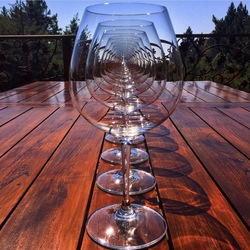


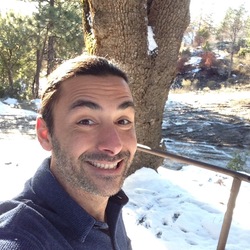






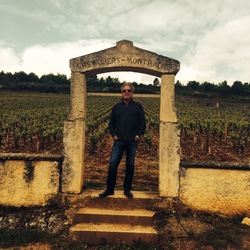

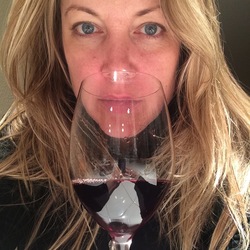

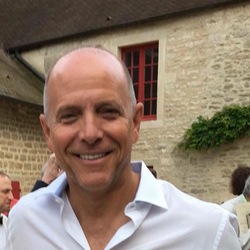

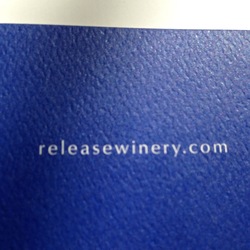
Jay Kline

The second wine of Chateau Pavie Macquin. Popped and poured, this needed at least 90 minutes to even begin to open up. In the glass, dark ruby with a nearly opaque core. Medium+ viscosity. On the nose, medium intensity with dark cherries, some purple flowers and freshly tilled earth. On the palate, dark cherries, plums, tobacco, and earth. Medium+ tannin and medium+ acid. Long and satisfying finish. Drink now with patience or hold for the next 10 years, easy. — 4 years ago